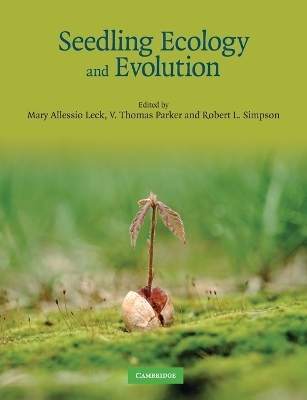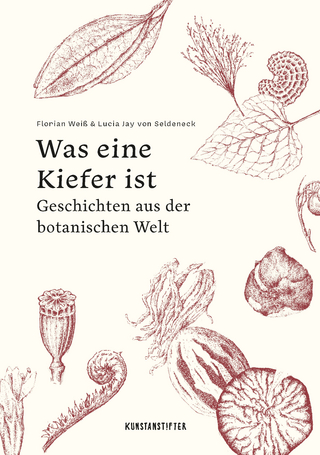
Seedling Ecology and Evolution
Cambridge University Press (Verlag)
978-0-521-69466-7 (ISBN)
Seedlings are highly sensitive to their environment. After seeds, they typically suffer the highest mortality of any life history stage. This book provides a comprehensive exploration of the seedling stage of the plant life cycle. It considers the importance of seedlings in plant communities; environmental factors with special impact on seedlings; the morphological and physiological diversity of seedlings including mycorrhizae; the relationship of the seedling with other life stages; seedling evolution; and seedlings in human altered ecosystems, including deserts, tropical rainforests, and habitat restoration projects. The diversity of seedlings is portrayed by including specialised groups like orchids, bromeliads, and parasitic and carnivorous plants. Discussions of physiology, morphology, evolution and ecology are brought together to focus on how and why seedlings are successful. This important text sets the stage for future research and is valuable to graduate students and researchers in plant ecology, botany, agriculture and conservation.
Mary Allessio Leck is Emeritus Professor of Biology at Rider University, New Jersey, where she has taught for 31 years. Her research is in wetland seed germination ecology. V. Thomas Parker is Professor of Biology at San Francisco State University. His research interest is in community ecology and ecological evolution. Robert L. Simpson is Professor of Biology and Environmental Science at the University of Michigan-Dearborn. His research focuses on freshwater wetlands.
Foreword Peter Grubb; Preface Mary Allessio Leck, Robert L. Simpson and V. Thomas Parker; Part I. Introduction: 1. Why seedlings? Mary Allessio Leck, Robert L. Simpson and V. Thomas Parker; Part II. Seedling Diversity: 2. Seedling natural history Mary Allessio Leck and Heather A. Outred; 3. Specialized seedling strategies I – seedlings in stressful environments José M. Facelli; 4. Specialized seedling strategies II – orchids, bromeliads, carnivorous plants, and parasites Dennis F. Whigham, Melissa K. McCormick and John P. O'Neill; Part III. Seedling Morphology, Evolution, and Physiology: 5. Embryo morphology and seedling evolution Karl J. Niklas; 6. Regeneration ecology of early angiosperm seeds and seedlings – integrating inferences from extant basal lineages and fossils Taylor S. Feild; 7. Physiological and morphological changes during early seedling growth – roles of phytohormones Elizabeth J. Farnsworth; 8. Seedling ecophysiology – strategies toward achievement of positive net carbon balance Kaoru Kitajima, Jonathan A. Myers; 9. The role of symbioses in seedling establishment and survival Thomas R. Horton and Marcel G. A. van der Heijden; Part IV. Life History Implications: 10. The seedling as part of a plant's life history strategy Angela T. Moles and Michelle R. Leishman; 11. Seedling recruitment and population ecology Ove Eriksson and Johan Ehrlén; 12. Seedling communities Jon E. Keeley and Phillip J. van Mantgem; 13. Spatial variation in seedling emergence and establishment – functional groups among and within habitats? Johannes Kollmann; Part V. Applications: 14. Does seedling ecology matter for biological invasions? Laura A. Hyatt; 15. The role of seedlings in the dynamics of dryland ecosystems – their response to and involvement in dryland heterogeneity, degradation, and restoration Bertrand Boeken; 16. Anthropogenic disturbance in tropical forests – towards a functional understanding of seedling responses James W. Dalling and David F. R. P. Burslem; 17. Seedling establishment in restored ecosystems Susan Galatowitsch; Part VI. Synthesis: 18. The seedling in an ecological and evolutionary context V. Thomas Parker, Robert L. Simpson and Mary Allessio Leck; References; Index.
| Erscheint lt. Verlag | 18.9.2008 |
|---|---|
| Zusatzinfo | 15 Tables, unspecified; 13 Halftones, unspecified; 60 Line drawings, unspecified |
| Verlagsort | Cambridge |
| Sprache | englisch |
| Maße | 189 x 245 mm |
| Gewicht | 1160 g |
| Themenwelt | Naturwissenschaften ► Biologie ► Botanik |
| Naturwissenschaften ► Biologie ► Evolution | |
| ISBN-10 | 0-521-69466-3 / 0521694663 |
| ISBN-13 | 978-0-521-69466-7 / 9780521694667 |
| Zustand | Neuware |
| Informationen gemäß Produktsicherheitsverordnung (GPSR) | |
| Haben Sie eine Frage zum Produkt? |
aus dem Bereich


